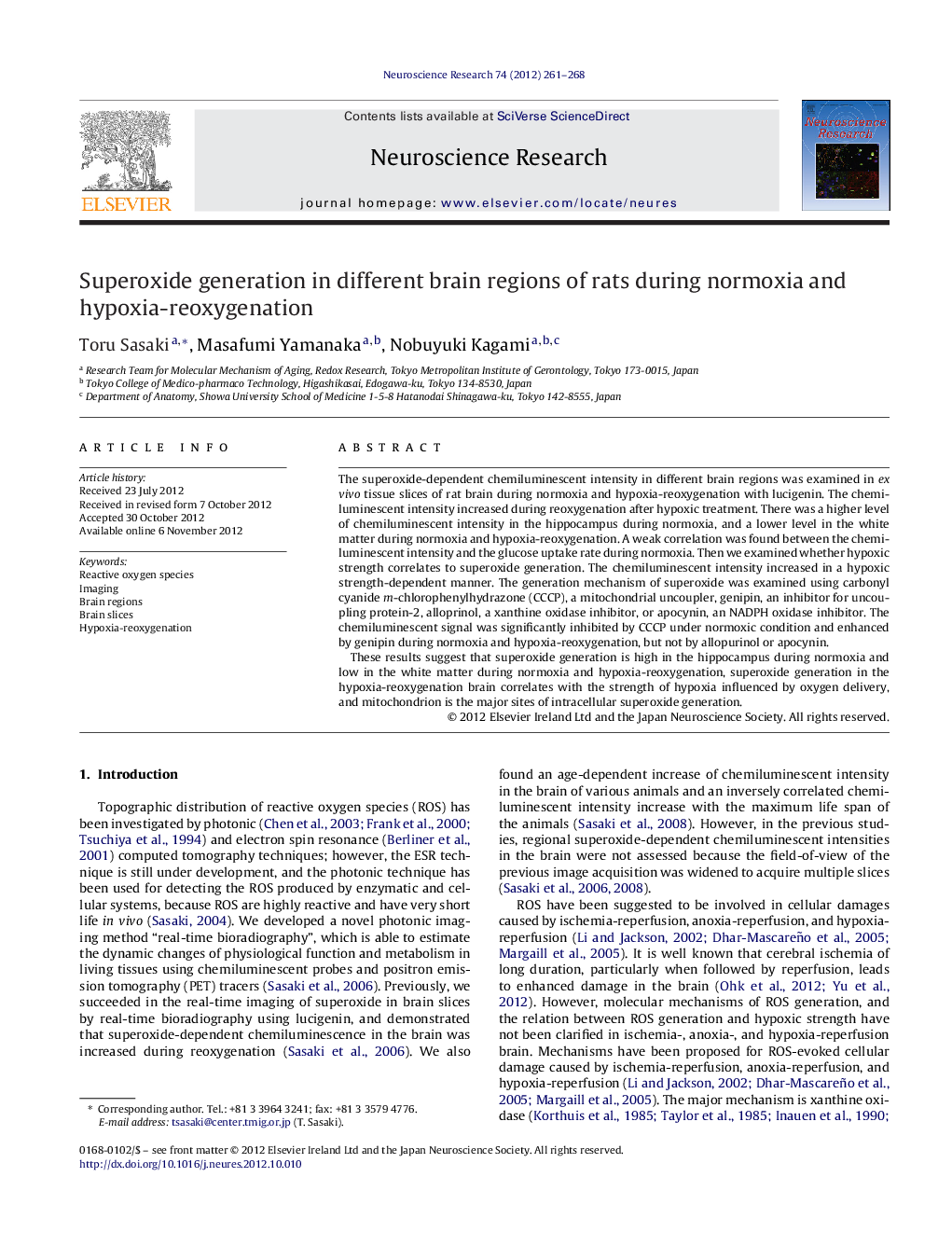| Article ID | Journal | Published Year | Pages | File Type |
|---|---|---|---|---|
| 4351586 | Neuroscience Research | 2012 | 8 Pages |
The superoxide-dependent chemiluminescent intensity in different brain regions was examined in ex vivo tissue slices of rat brain during normoxia and hypoxia-reoxygenation with lucigenin. The chemiluminescent intensity increased during reoxygenation after hypoxic treatment. There was a higher level of chemiluminescent intensity in the hippocampus during normoxia, and a lower level in the white matter during normoxia and hypoxia-reoxygenation. A weak correlation was found between the chemiluminescent intensity and the glucose uptake rate during normoxia. Then we examined whether hypoxic strength correlates to superoxide generation. The chemiluminescent intensity increased in a hypoxic strength-dependent manner. The generation mechanism of superoxide was examined using carbonyl cyanide m-chlorophenylhydrazone (CCCP), a mitochondrial uncoupler, genipin, an inhibitor for uncoupling protein-2, alloprinol, a xanthine oxidase inhibitor, or apocynin, an NADPH oxidase inhibitor. The chemiluminescent signal was significantly inhibited by CCCP under normoxic condition and enhanced by genipin during normoxia and hypoxia-reoxygenation, but not by allopurinol or apocynin.These results suggest that superoxide generation is high in the hippocampus during normoxia and low in the white matter during normoxia and hypoxia-reoxygenation, superoxide generation in the hypoxia-reoxygenation brain correlates with the strength of hypoxia influenced by oxygen delivery, and mitochondrion is the major sites of intracellular superoxide generation.
► Superoxide generation is high in hippocampus and low in white matter. ► Superoxide generation during reoxygenation increased in a hypoxic strength-dependent manner. ► Mitochondrion is one of the major sites of intracellular superoxide generation.
